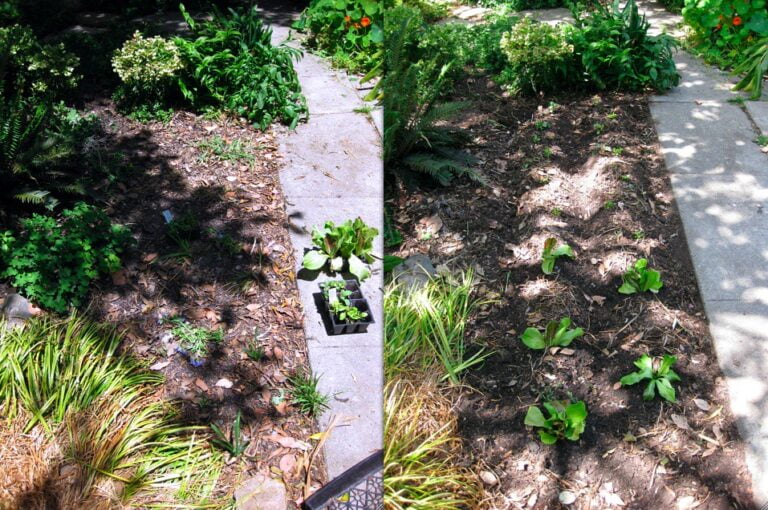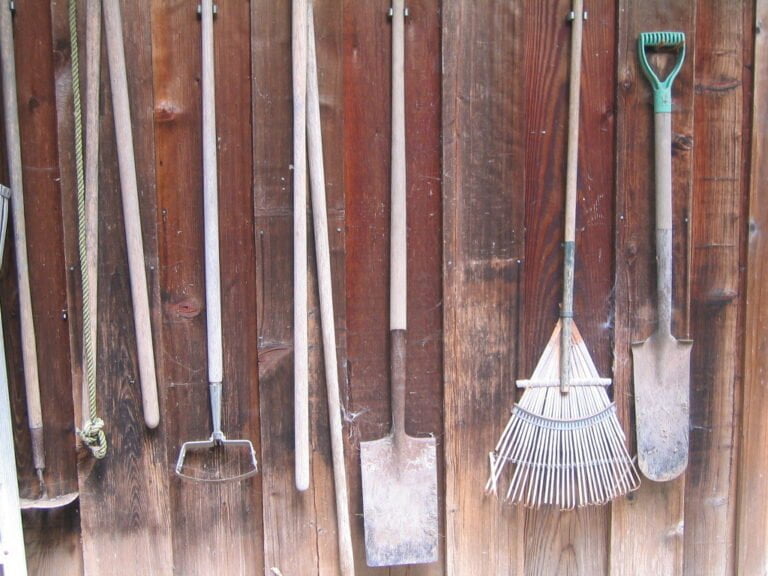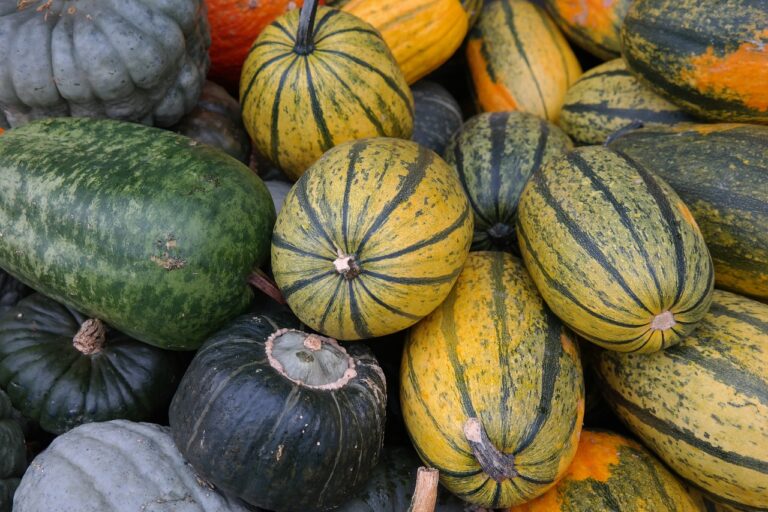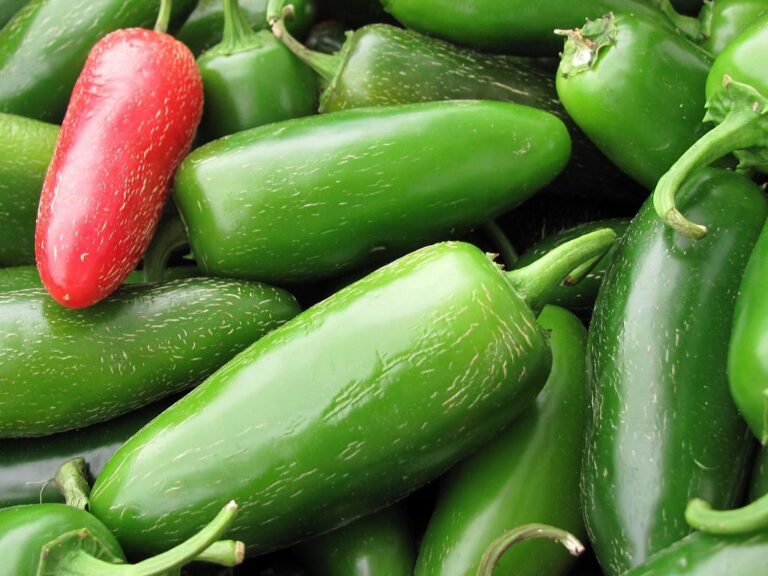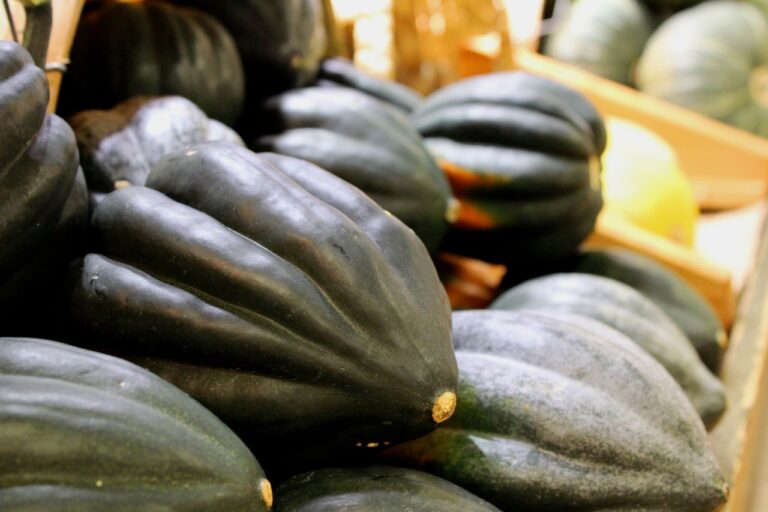Identifying When Butternut Squash Is Ripe: a Comprehensive Guide
To identify ripe butternut squash, observe the skin’s hard, golden color with a consistent matte texture. Gently press for firmness and check for resistance to puncturing. A sweet taste confirms ripeness. Harvest carefully, leaving a few inches of stem and avoiding green stems. Timing is critical. Cut when the skin is golden with a dry, brown stem. Proper improving methods boost freshness. For seed collection, wait until fully ripe, air dry seeds, and store in labeled, airtight containers. Maturing off the vine can improve flavor and texture. Master these steps to optimize your harvest.
Harvesting Techniques for Butternut Squash
When harvesting butternut squash, cut the fruit from the vine carefully to preserve its quality and prevent contamination. It is vital to guarantee the squash is ripe before harvesting to enjoy the best flavor and prolong its shelf life. To determine if the squash is ready for harvesting, look for signs such as a hard skin, a golden color, and a dry, brown stem. These indicators suggest that the butternut squash is at its peak ripeness.
When cutting the squash from the vine, leave a few inches of the stem attached to the fruit. This long stem helps to prevent bacteria from entering the squash, maintaining its quality during storage. It is crucial to make sure the stem is completely dry all the way back to the vine before harvesting. Squash with a green stem should be avoided as they might not be fully ripe and won’t store well.
Signs of Ripe Butternut Squash
When evaluating the ripeness of butternut squash, the color change of the skin and the firmness of the fruit are vital indicators. A ripe squash will display a consistent tan skin with no green spots, displaying a matte texture in shades of tan, amber, or orange. To confirm ripeness, gentle pressure should be applied to check if the squash resists being punctured by a fingernail.
Color Change
Upon reaching maturity, ripe butternut squash undergoes a noticeable shift in coloration, evolving from its initial green hue to tan, amber, or vibrant orange tones. To determine ripeness, look for a uniform color on the squash without any green spots. A matte finish on the skin is a key indicator that the squash is ready to be harvested. When checking for readiness, press your fingernail into the skin; if there is resistance, the squash is ripe. However, if your nail easily pierces the skin, the squash is still immature. Harvest butternut squash when the skin is hard, uniformly colored, and exhibits a rich, nutty tone. These visual cues are essential in identifying when butternut squash is at its peak ripeness.
Firmness Test
To assess the ripeness of a butternut squash, one can ascertain its readiness through a simple firmness test. When checking for ripe butternut squash, keep in mind that firmness is key. Here’s how to evaluate the firmness of the squash:
- Feel the Skin: Ripe butternut squash should feel firm and sturdy when gently pressed.
- Skin Resistance: Press a fingernail into the skin; resistance indicates ripeness.
- Softness Test: Immature squash will have softer skin that yields to pressure.
- Indentation Check: Soft or easily indented skin indicates that the squash is not yet ripe.
Butternut Squash Ripeness Indicators
Ripe butternut squash can be identified by examining the uniform tan, hard skin for any green spots. A ripe squash will have a critical skin with a rich tan, darker amber, or orange color. When gently pressed, the skin of a ripe butternut squash will offer resistance to the fingernail, indicating maturity. It’s important to avoid picking squash with skin that is easy to pierce, contains light to dark green spots, or appears very pale in color.
As butternut squash ripens, it continues to develop a sweeter taste as starch converts to sugars. This transformation in flavor profile is a key indicator of the fruit’s readiness for consumption. By paying close attention to the skin color, texture, and resistance to pressure, one can accurately determine the ripeness of a butternut squash. Additionally, the absence of green spots on the skin is a reliable signal that the squash has reached its peak maturity. Harvesting the squash at this best stage ensures a delicious and flavorful eating experience.
Harvesting Timeframe and Methods
When harvesting butternut squash, timing is essential for ideal ripeness and storage. As the squash turns golden and the stem dries to a brown color back to the vine, it’s time to pick. Cutting the squash from the vine high up helps maintain freshness and quality.
Optimal Harvest Time
At the peak harvest time for butternut squash, the skin should display a rich golden hue, signaling ripeness. When determining the best harvesting time, consider the following:
- Check for a dry and brown stem extending all the way back to the vine.
- Avoid picking squash with a green stem, as it indicates immaturity.
- Cut the squash from the vine high up to maintain freshness and prevent contamination.
- Wait until the stem is completely dry before picking to improve storage longevity.
Following these guidelines guarantees that the butternut squash is harvested at the right time, maximizing its flavor and storage potential.
Harvesting Techniques
Harvest butternut squash at peak ripeness by ensuring the stem displays a dry, brown color all the way back to the vine. This indicates maturity and readiness for picking. To maintain freshness, cut the squash from the vine high up, leaving a small piece of stem attached. Picking techniques are essential; avoid squash with a green stem, as it signals immaturity. Wait until the stem turns a nutty, darker color before harvesting. By picking ripe butternut squash, you guarantee best storage longevity and flavor. Proper harvesting methods contribute greatly to the quality of the squash, ensuring a delicious outcome. Remember to handle the squash delicately to prevent any damage that may affect its storage capabilities.
Tips for Successful Butternut Squash Harvest
To guarantee a successful butternut squash harvest, it is crucial to assess the fruit’s ripeness based on its skin color, texture, and stem integrity. Here are some tips to secure a bountiful harvest of ripe butternut squash that will last longer and maintain their quality:
- Color Check: Look for a rich tan, darker amber, or orange hue with a matte finish on the squash. Avoid picking squash with light to dark green spots or pale color as these may indicate underripeness.
- Texture Test: Harvest butternut squash when the skin is firm and uniformly tan to ensure ripeness. Squashes with skin that is easy to pierce are likely not ready to harvest and may not store well.
- Stem Inspection: Proper harvesting techniques include cutting the fruit with a few inches of stem still attached. This helps the squash store longer as the stem can continue to release ethylene gas, aiding in the ripening process even after harvest.
- Whole Vegetables Storage: Ripe squash continues to ripen after harvest by converting starch to sugars, enhancing its flavor profile. Storing whole vegetables instead of cut ones will help the squash last longer and maintain its freshness.
Early Harvesting Considerations
Early assessment of butternut squash harvesting involves inspecting the skin’s firmness and color to determine the fruit’s ripeness. Harvesting butternut squash prematurely may result in immature fruits with light yellow or green spots on their skin. It is important to wait until the squash achieves the desired ripeness before harvesting. Ripe butternut squash typically displays a rich tan, darker amber, or orange color with a matte finish. Squash that is not fully mature should not be harvested, as they will lack the best flavor and texture.
When considering early harvesting, it is critical to pay attention to the skin’s texture. Ripe butternut squash should have a firm skin that is hard to pierce. Immature squash may have a glossy appearance and can be easily punctured, indicating that they are not ready for harvest. If unsure about the ripeness of the squash, it is recommended to leave them on the vine to mature further.
In cases where immature squash has been harvested, they can be left in a cool, dry place to ripen. Allowing the immature squash to mature off the vine until the skin becomes firm and evenly tan can help improve their flavor and texture. Proper harvesting considerations are important to ensure the best quality butternut squash for consumption.
Seed Harvesting and Storage
Inspecting the fully ripe and mature butternut squash for seed harvesting and storage involves making sure the seeds are dry before storing them in a cool, dry place for future planting. Harvesting butternut squash seeds at the right time is essential to guarantee successful germination in the next planting season. Here are some key steps for harvesting and storing butternut squash seeds effectively:
- Harvesting Time: Wait until the butternut squash is fully ripe and mature on the vine before collecting the seeds. This ensures the seeds are fully developed and viable for planting.
- Drying Process: After extracting the seeds from the squash, spread them out in a single layer on a tray or paper towel. Allow the seeds to air dry in a warm, well-ventilated area until they are completely dry. This step is vital to prevent mold formation during storage.
- Storage Conditions: Keep the dried butternut squash seeds in a cool, dry place to maintain their viability. Airtight containers such as glass jars or sealed plastic bags work well for seed storage. Avoid exposing the seeds to moisture or extreme temperatures.
- Labeling and Dating: To keep track of the seed varieties and their storage time, label the containers with the seed type and the date of storage. This practice helps in organizing your seed collection and ensures you use the oldest seeds first for planting.


